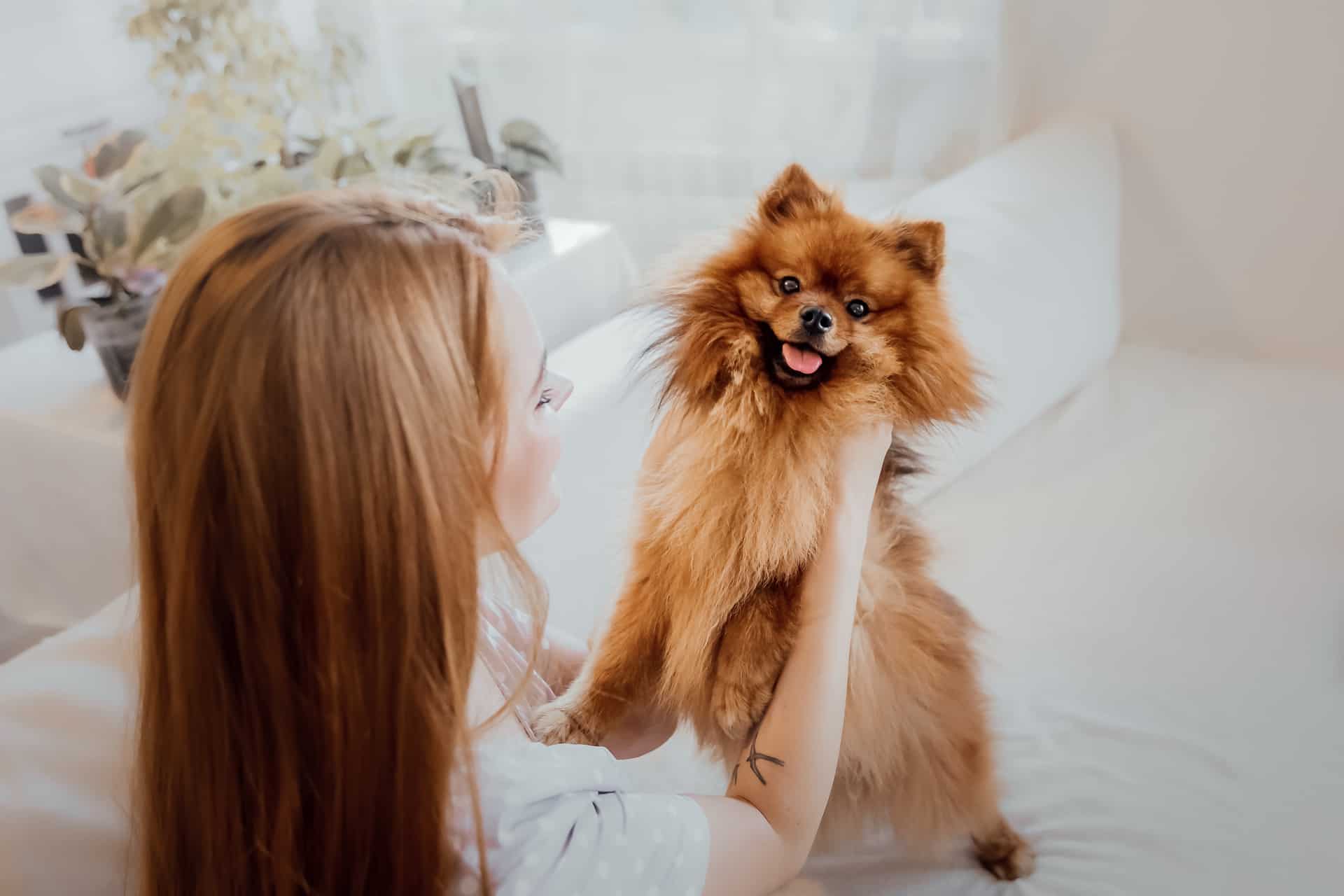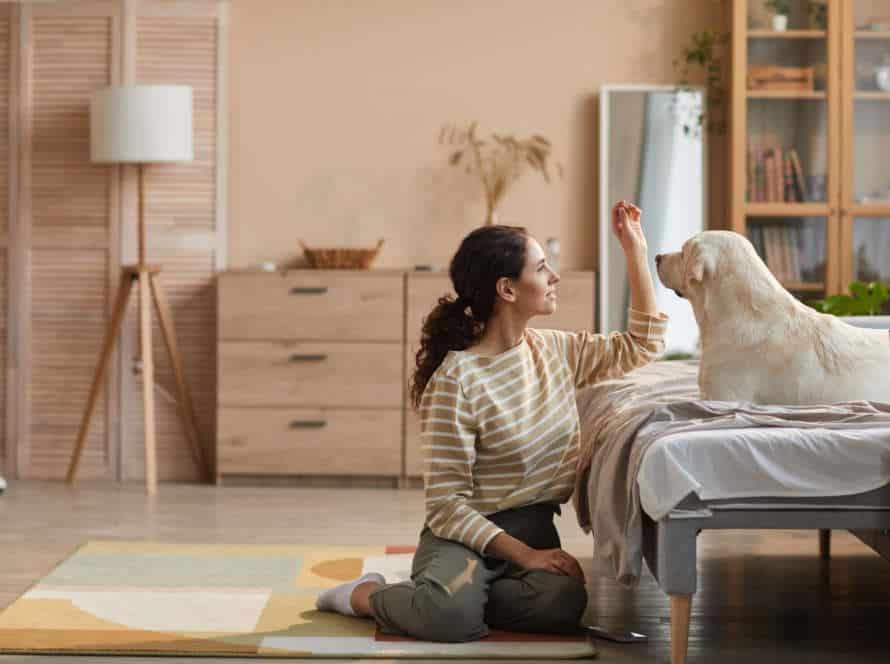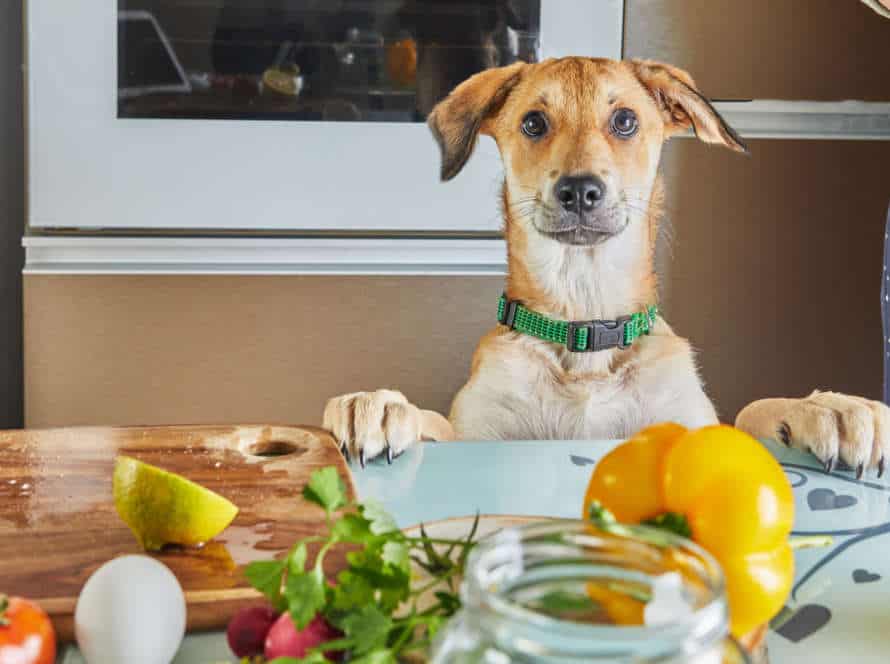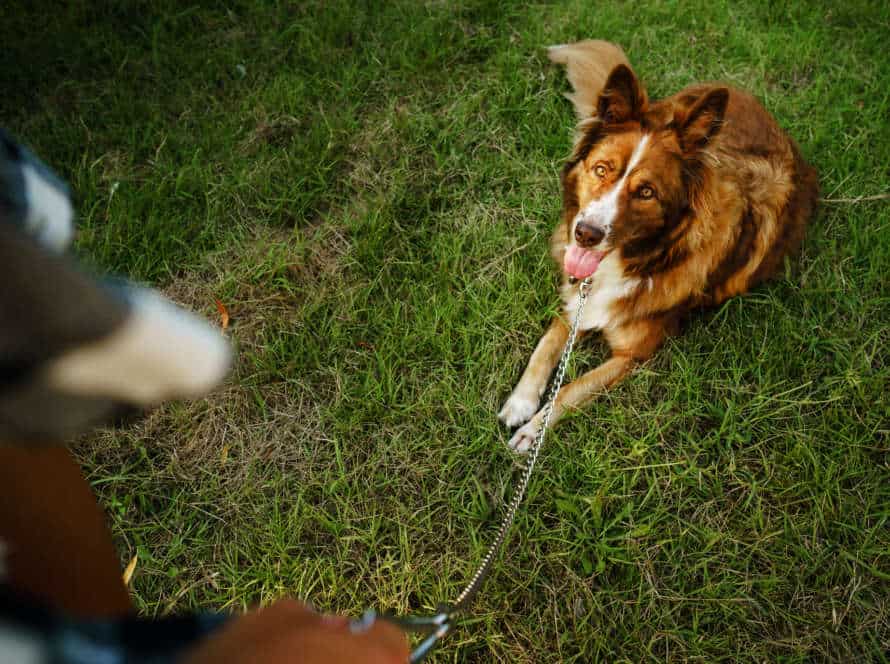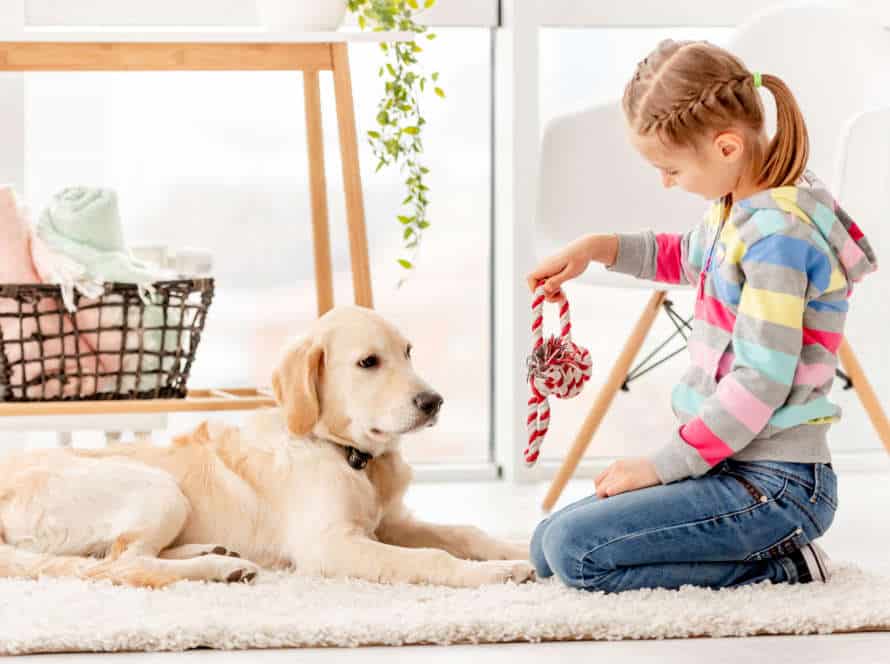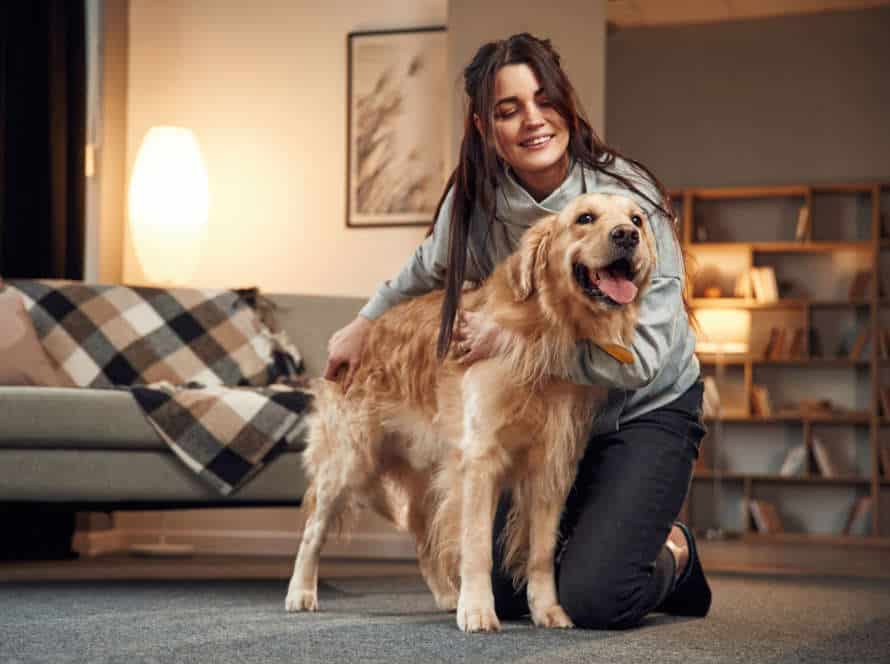How to Transition from a Potty Training Schedule to a Fully House Trained Dog
Transitioning your pup from potty training to full house-training demands time, patience, and consistency. Here are some tips to help you:
- Gradually extend the time between potty breaks – add 15-30 mins every few days.
- Observe your dog’s behavior – watch for signs that they need to go, eg. scratching the door or circling.
- Reward good behavior – praise your pup with treats and positive reinforcement after they go potty outdoors.
- Form a routine – stick to a reliable schedule for meals, exercise and potty breaks.
- Clean up accidents instantly – use an enzyme cleaner to remove any lingering smells that might tell your dog it’s ok to pee inside.
- Be patient – each dog learns at their own pace, so don’t be disheartened if there are slips.
Pro Tip: If you’re having trouble, consider consulting a professional dog trainer or behaviorist.
Establishing a House Training Routine
Training your pup takes time, patience and consistency. Potty training is only the start – the real challenge is transitioning to a house-trained dog. Here are some tips to create a house training routine:
Creating a schedule for feeding and watering
Creating a feeding and watering routine is key for house training your pup. Here’s how:
- Determine the right amount of food and water for your dog.
- Set a consistent feeding time that fits their daily activity and exercise.
- Refill their water bowl to keep them hydrated and to avoid accidents.
- Take them out for potty breaks after every meal or water intake, or at regular intervals based on their age, breed, and exercise routine.
With patience and consistency, you can create a successful dog training routine that works for both your pup and your lifestyle.
Designating a specific potty area
Designing a special spot for your pet’s potty is essential for a successful house training routine. Follow these steps:
- Pick out a spot in the backyard that will be their potty area.
- Whenever they need to go, take them to the designated area.
- Say a consistent phrase, like “go potty,” to help them connect the area with the action.
- Reward them with treats and praise when they use the potty area correctly.
- If there are any accidents, clean the area thoroughly to remove any traces of urine or feces.
- With time, they will link the spot with going potty, making your house-training easier.
Pro tip: Consistency is the key to success here. Be patient and encouraging throughout the process, and you’ll have a fully house-trained pet before you know it.
Establishing a consistent reward system
Creating a steady reward system is key when switching your dog from potty training to being totally house trained. Here are some tips to craft an effective and consistent reward system:
- Figure out your dog’s ideal reward – could be words of praise, a treat, or a toy – it should be something that motivates your pup.
- Pick a command for your dog to link with the reward, like “Good job!” or “Yes!“.
- Be consistent in rewarding your dog each time they do something right, like going to the toilet outside or warning you to go out.
- Gradually lower the amount of rewards with time as your dog gets more trustworthy.
By setting up a consistent reward system, your dog will relate good behavior with positive reinforcement, making house training simpler for both you and your furry friend.
Recognizing your Dog’s Potty Signs
Potty training your pup? Learn to recognize when your dog needs a potty break. To help your pet transition from schedule potty training to full house training, you must understand their cues. With practice, you can use these signs to help your pup become house trained. Let’s get started.
What are the signs that your pooch needs a break?
Watching for specific behaviors
Watching your pup can help recognize their potty signs. These signs include:
- Sniffing, circling, or pacing.
- Whimpering or barking.
- Scratching or pawing at the door.
- Interrupting play or stopping activities.
- Restlessness or agitation.
- Intently staring.
When you see these behaviors, take them to their potty spot or outdoors. Reward them when they go outside. Doing this will help them learn to communicate their need to go out and be house trained.
Understanding the difference between a pee and a poo
Knowing the difference between peeing and pooing is key when understanding your pup’s potty signals and switching from a potty training regime to a completely house-trained pup. Here are a few key points to remember:
Peeing:
- Generally, dogs pee more often than they poo.
- Peeing is usually quicker than pooing.
- When outside, pups tend to lift their leg to pee, and when indoors, they squat.
Pooing:
- Generally, dogs poo less often than they pee.
- Pooing takes more time than peeing.
- When pooing, dogs typically squat, both indoors and outdoors.
Pro tip: Keep an eye on your dog’s body language and behaviour when it’s time to go to the loo. This will help you identify their individual potty habits and signals, making it simpler to achieve full house-training.
Transitioning from a Potty Training Schedule to Fully House Trained
Potty training your pup is an essential part of being a dog owner. It can be intimidating, but with patience and consistency, you can do it! Going from a potty schedule to a fully house trained pup can be tricky, yet with the proper steps, it can be a successful process for both you and your dog. How do we make it work? Let’s take a look!
Gradually increasing freedom and supervision
Gradually increasing freedom and supervision is the key to transitioning your dog to full house training. Don’t give too much freedom too soon – or accidents may occur. Follow these steps:
- Start with a little freedom and expand the area gradually.
- When unsupervised, use a crate or designated area.
- Watch for signs that your dog needs to go out and take them on a schedule – especially after meals, play, and naps.
- Praise your pup when they go outside and avoid punishing them for accidents. Positive reinforcement works best!
With gradual freedom and supervision, your dog will become fully house trained and enjoy their independence.
Addressing setbacks and accidents
Transitioning to a house-trained dog from potty training can have hiccups! But, with appropriate techniques & care, you can manage these issues. Here are some tips to help:
- Be patient & stick to the routine – even if there are accidents.
- Supervise your pup & keep them in a confined space when you can’t.
- Reward with treats & praise when they pee in designated area.
- Clean up accidents ASAP with an enzymatic cleaner – to remove odor & discourage future offenses.
- For male dogs with marking or house-soiling, use a belly band or diaper.
- If pup still struggles, get help from vet or professional trainer.
Consistent training & patience will make them house-trained. Pro Tip: Every dog is different & some may take longer. Stay positive & consistent – your furry friend will get there soon!
Establishing regular exercise routine and outdoor playtime
Once you’ve successfully potty trained your pup, it’s time to get them a regular exercise routine! Exercise, play, and attention are all important for keeping your dog happy and healthy. It also helps build trust, teaches commands, and helps them socialize with other dogs.
To transition from potty training to a house-trained routine, here are some tips:
- Slowly increase the amount of time indoors without going potty.
- Create an outdoor routine that includes times of day and places to go.
- Introduce activities like exercise and playtime.
- Give them toys and chews to keep them happy and busy.
Be consistent with your routine. Bonus Tip: Keep a journal to track their activity and adjust it as needed.
Tools and Resources to Help with the Transition
Potty training to house trained pup – a daunting task! Having the correct tools and resources is key. Therefore, let’s explore different strategies and resources to make the transition successful. Ready? Here we go!
Crate training
Crate training is a great way to teach your pooch potty habits. Here are some tips and tools to help you transition from potty training to a fully house-trained pup!
- Crate: Get the right size crate for your pup. Not too big, so they can’t pee or poop in one corner and stay in the other.
- Treats and Toys: Use treats and toys to reward your pup for going into their crate and staying there for longer periods of time.
- Potty Breaks: Make a schedule for regular potty breaks and gradually increase crate time.
- Patience: Be patient with your pup and understand that crate training is a process. Don’t leave them in the crate too long or use it as punishment.
Pro tip: If your pup won’t take to crate training, get help from a professional dog trainer.
Using a tether
Using a tether is great for transitioning from potty training to full house-training of your dog. Here are the steps:
- Buy a tether that’s long enough for comfort but short enough that you can keep your pup in view.
- Attach the tether to a solid object like a table or chair leg.
- Clip the leash to the tether and onto their collar or harness.
- Keep them on the tether when you can’t supervise to avoid accidents or destructive behavior.
- For potty breaks, unclip the lead and take them out on a leash.
- Gradually increase the time off the tether as they become more reliable with potty training.
- And don’t forget to praise and reward them for good behavior and progress.
Puppy pads
Puppy pads can be helpful when teaching your pup to use the toilet. Here’s how to use them:
- Place the pads in an area for your dog.
- When they go on the pad, give lots of praise and treats.
- Gradually reduce the space as they get better.
- Use verbal cues like “go potty” and reward with treats and praise.
Other resources include crate training, consistent training and feeding schedule, outdoor exercise and playtime.
Patience and positive reinforcement are essential to fully house train your pup.
Troubleshooting Common Issues
Potty training a pup? Great! It’s a good start for a happy, healthy home. Keep consistent with your puppy and make sure they go outside often. But sometimes issues come up during the transition to a fully house-trained dog.
Let’s discuss some common problems and ways to fix them:
Separation anxiety
Separation anxiety is a common issue for pet owners. When transitioning from potty training to house training, your dog may become anxious or destructive. To manage it:
- Start by leaving your dog alone for short periods and gradually increase the length.
- Provide them with toys or puzzles to keep them mentally stimulated.
- Leave the radio or TV on for background noise.
- Crate training can provide a safe and secure space.
- Consult your vet for medication or behavior modification techniques.
With patience and consistency, you can help your pup overcome separation anxiety.
Marking behavior
Marking – a behaviour pet owners often encounter when switching their pup from potty-training to fully house-trained – is a natural instinct for dogs to show their territory. Although challenging to change, with consistency and effort it can be managed.
Here are some tips to consider:
- Give your dog chances to relieve itself outside.
- Monitor your dog inside and take it out regularly, especially after naps and meals.
- Limit access to areas where marking happens a lot.
- Use an enzymatic cleaner to clean and remove scent in marked areas.
By following these prevention tips, you can change from potty-training to a fully house-trained dog. In time, the marking behavior will go away.
Submissive urination
Submissive urination is something many pups face when transitioning from pee-training to full house-training. It’s characterized by weeing when anxious or scared – usually in front of dominant people/dogs in the house. Here are some tips to help:
- Become the pack leader, giving structure and routine to give your pup confidence.
- Don’t punish or scold them for weeing.
- Use positive reinforcement like praise and treats when they go outside.
- Use enzymatic cleaners to get rid of odours to stop it happening again.
- Give your dog more freedom and access to your home, keeping an eye on their behaviour.
- If it’s still a problem, ask a pro dog trainer for help.
Pro tip: Give your pup time and patience during the training process. Each pup develops differently, so don’t expect too much too soon.
Frequently Asked Questions
1. What signs indicate that my dog is fully house trained?
When your dog is fully house trained, they will consistently ask to go outside to use the bathroom, they will not have accidents indoors, and they will no longer demonstrate behaviors such as sniffing around or circling before going to the bathroom.
2. How can I know when it’s time to transition from a potty training schedule?
Once you notice that your dog is consistently asking to go outside to relieve themselves, not having any accidents indoors, and showing other signs of being fully house trained, it’s time to begin transitioning away from a potty training schedule.
3. Should I completely stop taking my dog outside on a regular schedule?
No, it’s important to continue taking your dog outside on a regular schedule even after they are fully house trained. This not only helps prevent accidents but also provides your dog with routine and exercise.
4. What should I do if my dog has an accident indoors during the transition period?
If your dog has an accident indoors during the transition period, do not punish them. Instead, clean up the mess and take them outside to finish going to the bathroom. Then, continue with the transition as planned.
5. How can I reward my dog for successfully transitioning to being fully house trained?
You can reward your dog with treats, praise, and extra playtime for successfully transitioning to being fully house trained. It’s important to reinforce good behavior with positive reinforcement.
6. What if my dog is still having accidents indoors after the transition period?
If your dog is still having accidents indoors after the transition period, it may be a sign of an underlying health issue or behavioral problem. Consult with your veterinarian or a professional dog trainer for assistance.

